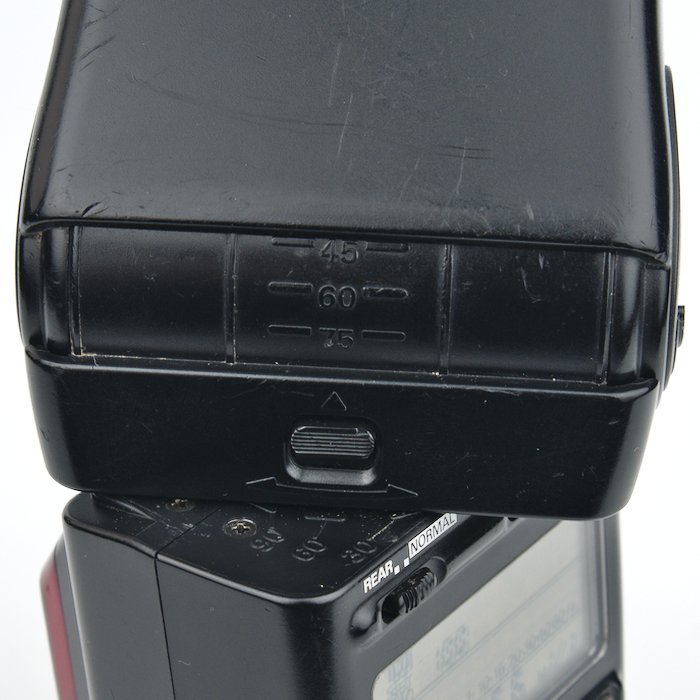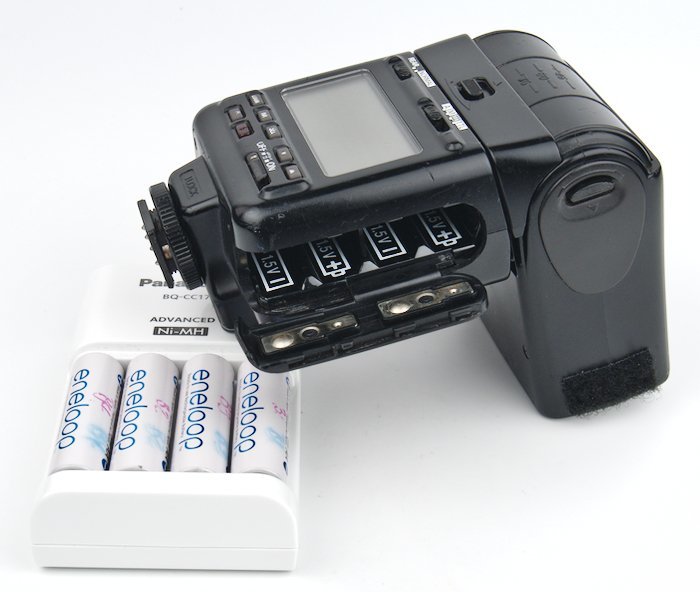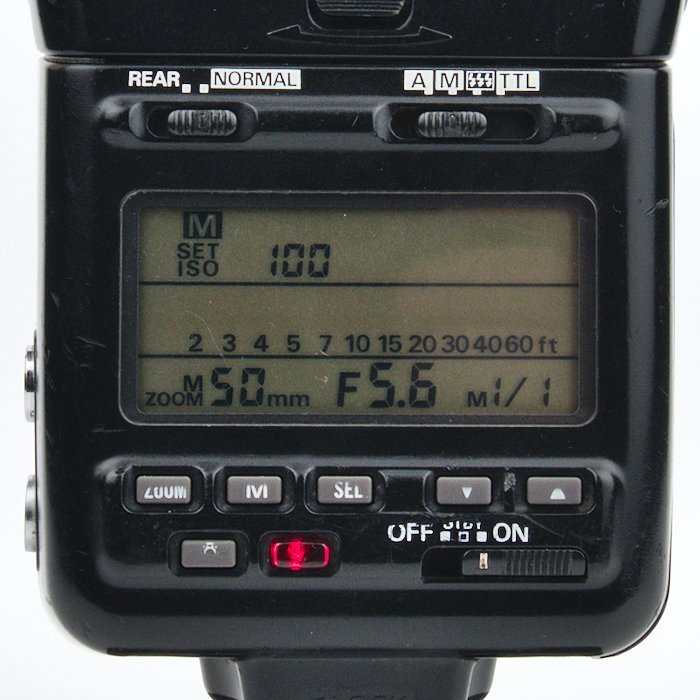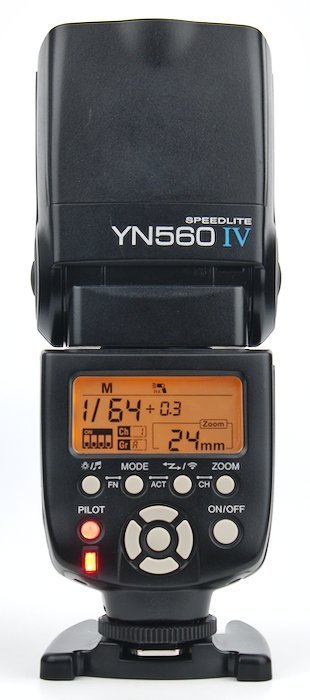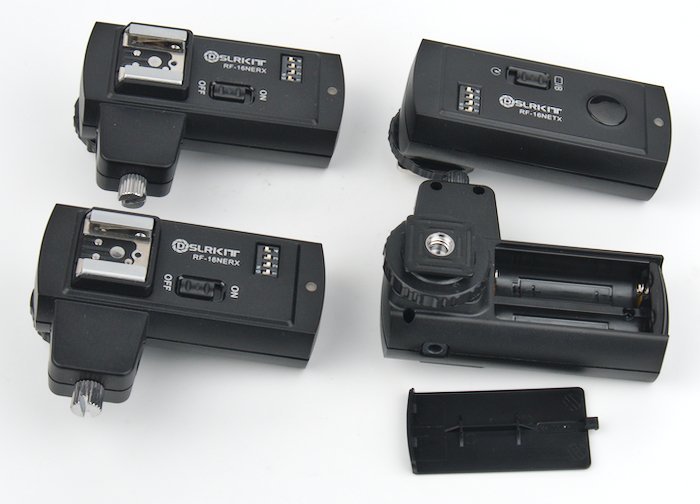Nikon SB-24 Speedlight - Groundbreaking Autofocus TTL Flash
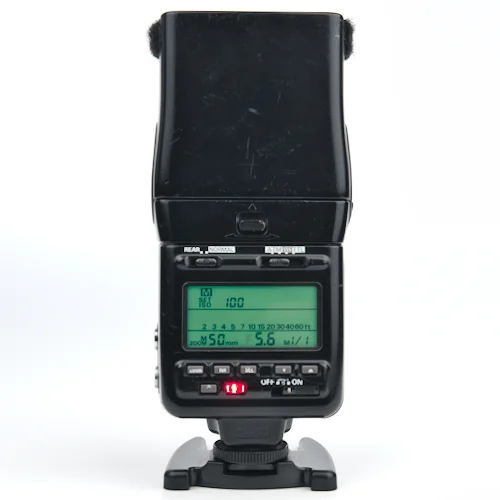
The Nikon SB-24 Speedlight was released in 1988. This is the flash that allowed Nikon to claim the throne of having the best flash on the market.
Some of the impressive features included are:
- Matrix, and Center-Weighted fill flash.
- Automatic TTL flash exposure control.
- Repeating flash for stroboscopic effect.
- Front and Rear Curtain sync.
- Zoom head covering 24mm to 85mm focal lengths.
- AF assist infrared beam capable of working in total darkness.
- Ability to act as a master flash for 4 additional Speedlights.
Manual
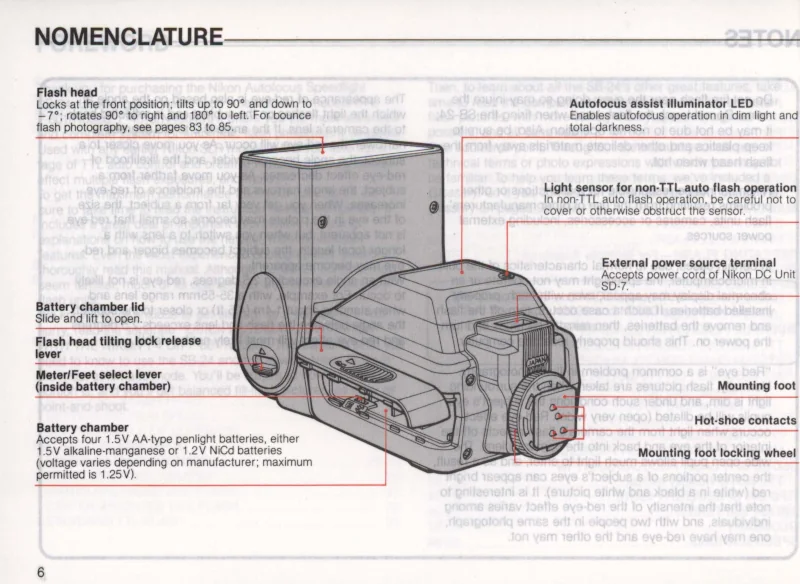
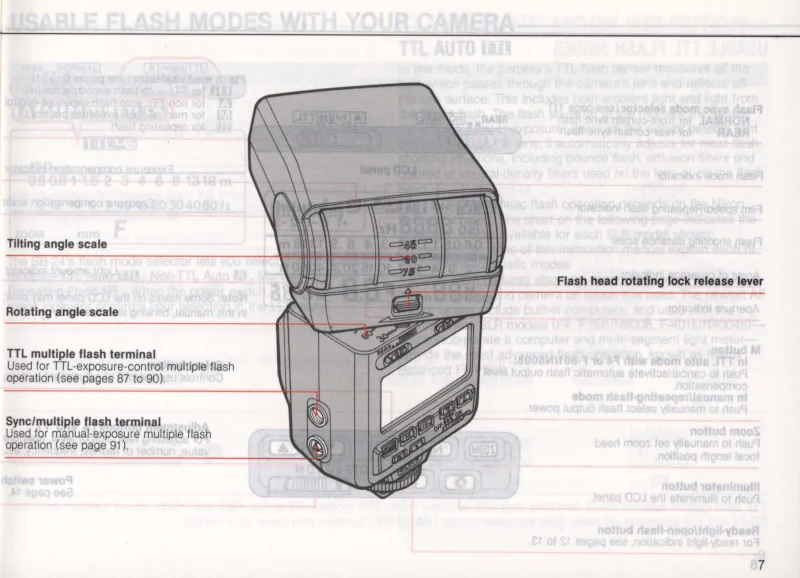
The SB-24 manual is available as a PDF download from Nikon. It has detailed answers about almost any question you could have.
Guide Number
The guide number for the flash is 42m (138ft) with a 50mm lens. There is a guide number chart on page 81 of the manual.
My Nikon SB-24 Guide Number page also has a copy of the chart and additional info.
Camera Compatibility
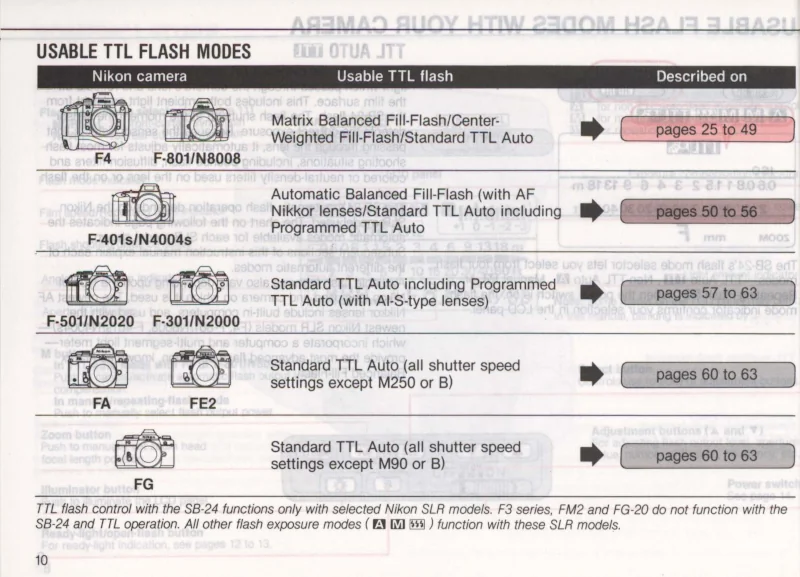
The SB-24 was released along with the Nikon N8008 (Nikon F-801), with the Nikon F4 soon following.
The Speedlight can be used in manual mode on almost any camera. TTL is only listed as usable in the Nikon SB-24 manual [PDF] with the following cameras:
- Nikon F4
- Nikon N8008 (F-801)
- Nikon N4004s (F-401s)
- Nikon N2020 (F-501)
- Nikon N2000 (F-301)
- Nikon FA
- Nikon FE2
- Nikon FG
Used Price & Where to Buy
When I checked prices, there were SB-24’s available for less than $40. It will not be difficult to find a copy in good condition.
Affiliate Advertising Disclosure
Outside the Shot is a participant in the Amazon Services LLC Associates Program, an affiliate advertising program designed to provide a means for sites to earn advertising fees by advertising and linking to Amazon.com.
As an eBay Partner, I may be compensated if you make a purchase. I also participate in affiliate advertising programs with KEH and Adorama. More can be found on the Affiliate Discolsure page.
Check current prices at eBay or Amazon.
Original Price
The earliest pricing information on the SB-24 comes from Foto Cell Inc and Smile Photo price lists in the back of a Popular Photography magazine from December 1989. Both stores list the flash for an original price of $239.95. All other stores that carried the flash have their prices listed at “call.”
Using the BLS inflation calculator, $239.95 would be equivalent to $590.51 in February, 2024.
Flash Head
The flash head locks in the front position. It can tilt up to 90_°_ and down to -7_°, and swivel 90°_ to the right and 180_°_ to the left. These movements are the standard you’ll see among almost all modern speedlights.
Setting the flash head to -7_°_ is for shooting distances that are less than 1.5m (5ft).
If used with a lens with CPU contacts the flash head will automatically zoom was a compatible camera. The zoom range has six settings; 24mm, 28mm, 35mm, 50mm, 70mm, and 85mm. The zoom can be manually controlled.
Flash Duration
| Power Output | Duration (sec.) |
|---|---|
| 1/1 | 1/1000 |
| 1/2 | 1/1100 |
| 1/4 | 1/2700 |
| 1/8 | 1/5500 |
| 1/16 | 1/1100 |
Physical Specs
Weight: 390g (13.7oz) without batteries.
Dimensions (W x H x D): 80 x 131 x 100mm | 3.1 x 5.2 x 3.9 in.
As a frame of reference, this is slightly smaller and heavier than my current favorite lower-priced flash, the Yongnuo YN560 IV Speedlite.
Battery Life & Recycle Time
The flash can be powered by 4 AA batteries or an external battery pack.
I use mine with Panasonic Enloop batteries (NiMH) and get around a 5 sec recycle time at full power. Lower powered flashes decrease the recycle time.
| Battery Type | # of Flashes | Recycle Time |
|---|---|---|
| Alkaline | 100 | 7 sec. |
| NiCd | 40 | 5 sec. |
| SD-7 | Up to 200-400** | 6, 10, or 30 sec. |
Notes: Using the AF illuminator for autofocus will decrease the number of flashes.
**400 times require alkaline batteries to be in the SB-24. Longer recycle times will increase battery life.
Controls & LCD Screen
The back of the flash has an LCD with a green backlight. It displays the ISO the Speedlight is set to, zoom, f/stop, power output, and a distance scale.
The controls are made up of 3 sliders and 7 buttons. Settings on sliders are:
- Normal (front) or Rear-curtain sync.
- Auto (A), Manual (M) Stroboscopic (3 flash bolts), or TTL.
- Off, Standby, or On.
Rear-curtain sync and automatic TTL are limited to the Nikon F4, N8008 (F-801), and camera models that were released later.
The stroboscopic mode is controlled by the up and down buttons. The down button will select the number of times the flash will fire and up will determine the speed of the strobe.
Standby turns the flash off when the camera’s meter is turned off. Using alkaline batteries, the flash can stay in the standby mode for approximately 20 days.
Short Review
Pros
- Durable and well made.
- TTL protocol is compatible with film cameras.
- Features that are not found on cheap modern speedlites.
Cons
- No optical slave mode or built-in wireless trigger.
- Flash refresh time is longer than modern flashes.
- TTL is not compatible with digital cameras.
5/5 for Film
If you’re planning to use the Nikon SB-24 Speedlight with a compatible film camera, it is an awesome value. It’s cheap, durable, and packed full of features. Most importantly, it has the correct TTL protocol to work with many Nikon 35mm film cameras.
2.5/5 for Digital
Nikon’s digital cameras have a different TTL protocol than the one used in the SB-24. That difference makes the flash much less appealing for use on a digital camera.
For a bit more money you could get a Yongnuo YN560 IV Speedlite, that has wireless control & triggering, optical slave mode, and a faster recycle time.
I don’t want to buy relatively expensive TTL sync cords just to have them in the way.
Cheap wireless triggers can eliminate cords. The problem is they add weight, cost money, and require batteries. After those expenses, the Yongnuo’s or similar flashes are more attractive.
Accessories
The Nikon SD-7 or SD-8 battery packs can be used. They use C batteries and cost more than $50, if you can find them.
There is a SS-24 soft case. They are available on eBay for ~$10.
TTL Cords and Multi-Flash Sync Cables
- SC-17 - TTL Remote Cord
- SC-24 - TTL Remote Cord
- AS-10 - Multi-Flash Adapter
- SC-18 & SC-19 - Multi-Flash Sync Cord
Wireless Camera Triggers
Third-party wireless triggers remove the need to have TTL cords running everywhere. They also increase the range of where the flashes can be setup.
Due to the price of an SB-24, it does not make sense to spend lots of money on wireless triggers. If you do want some, buy the cheapest you can find.
Nikon SB-24 Guide Number Chart
The flash guide number is the maximum distance a subject can be away from the flash and still be properly illuminated. This means the guide number can be used as a proxy for how powerful a flash is.
The guide number for the flash is 42m (138ft) with a 50mm lens. More general information on the flash can be found on this Nikon SB-24 Speedlight page.
This chart below was recreated from the one found on page 81 of the Nikon SB-24 manual [PDF].
You can determine the correct f/stop at a given distance with this equation:
f/stop = guide number / flash to subject distance
| Power | 24mm | 28mm | 35mm | 50mm | 70mm | 85mm |
|---|---|---|---|---|---|---|
| 1/1 | 30 (98) | 22 (105) | 36 (118) | 42 (138) | 47 (154) | 50 (164) |
| 1/2 | 21 (69) | 22 (72) | 25 (82) | 30 (98) | 33 (108) | 36 (118) |
| 1/4 | 15 (49) | 16 (52) | 18 (59) | 21 (69) | 23 (75) | 25 (82) |
| 1/8 | 10.5 (34) | 11 (36) | 12.5 (41) | 15 (49) | 16.5 (54) | 18 (59) |
| 1/16 | 7.5 (25) | 8 (26) | 9 (29) | 10.5 (34) | 11.5 (38) | 12.5 (41) |
Distances are in meters (ft). For film speeds different from ISO 100, multiply the distance in by the following:
- ISO 25 x0.5
- ISO 50 x0.71
- ISO 200 x1.4
- ISO 400 x2
- ISO 800 x2.8
- ISO 1600 x4
Example Calculations
50mm lens
Let’s say you wanted to use the flash with a 50mm lens. If the flash is 21m away from the subject, we can calculate the f/stop to use on the lens.
At full power the flash will have a guide number of 42m.
f/stop = 42m / 21m f/stop = 2
85mm lens
Now let’s say you want to use a 85mm lens with the flash 3m away from the subject. By varying the power output of the flash, we can control which f/stop will produce a well exposed image.
| Power | Guide Number | / 3m = f/stop |
|---|---|---|
| 1/1 | 50m | f/16.7 |
| 1/2 | 36m | f/12 |
| 1/4 | 25m | f/8.3 |
| 1/8 | 18m | f/6 |
| 1/16 | 12.5 | f/4.2 |
